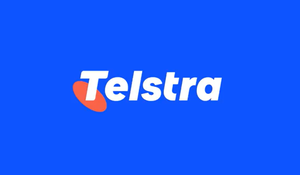Who Does What: Femtocell Services
Light Reading Mobile tracks the industry's first femtocell deployments Who's offering femtocell services now? What's the business case? Who's next?
March 23, 2010

Femtocells are among the most hyped and divisive technologies to hit the wireless industry. Now that these little indoor base stations have started to make their way into operators' networks, Light Reading Mobile has compiled a list of all the commercial femtocell services that are available today.
It's a short list. To date, only 10 operators offer commercial femtocell services.
In August 2008, Light Reading Mobile reported that early 2010 would be a critical period for femtocells as operators would decide how and when to ramp up trials to full-blown commercial services, based on an operator survey conducted by Heavy Reading. The majority of operators surveyed said they expected to launch commercial services in 2010 or 2011. (See 2010: Year of the Femto.)
In this Who Does What report, Light Reading Mobile tracks the first commercial femtocell rollouts and digs in to the operators' service strategies and future femto plans.
Why now, when femto deployments are so few and so small scale? Because the home base station industry is on the verge of maturing. An analysis of who offers femto services and why will provide some insight into how this market will develop.
Today, the driver for femtocells is clearly voice and data coverage. Nearly all of the operators on our list use femtocells today just to provide better indoor cellular coverage in homes or offices. NTT DoCoMo Inc. (NYSE: DCM) is the only operator that has positioned its femto service, called MyArea, to be more than just a coverage booster. (See DoCoMo to Upgrade Its Femtos.)
Not all readers will agree with our list of commercial femto services; and, admittedly, it is difficult to distinguish when a service is really commercial or an extension of a user trial. For example, we have included AT&T Inc. (NYSE: T) and China Unicom Ltd. (NYSE: CHU) on our list because their services are used by real customers, even though on a limited basis. Others could argue that these services are pilots, not serious commercial offerings.
As with previous Who Makes What and Who Does What reports, we ask you to help us complete the picture. If there are services or trials that we missed, or if there is information here that is inaccurate, please tell us on the message boards or send an email to [email protected], and we'll update the information. (See Who Makes What: LTE Equipment and Who Makes What: Femtocells.)
Here’s a hyperlinked list of contents:
Page 2: Commercial Femtocell Services
Page 6: Who's Next?
— Michelle Donegan, European Editor, Light Reading Mobile
Next Page: Commercial Femtocell Services
{Table 1}
Next Page: Operator Profiles: AT&T, China Unicom, NTT DoCoMo & Optimus
AT&T's 3G Microcell
All femto eyes are on AT&T Inc. (NYSE: T). The sheer size of the operator combined with the market opportunity in the U.S. -- where the geography makes cellular coverage particularly problematic -- makes AT&T a significant player in 3G femtocells. Its deployment plans have long been speculated to be massive, and perhaps even the world's largest, but the actual number of femtos that the operator has ordered, or plans to order, has not been confirmed by Light Reading Mobile.
The operator launched a limited service in September 2009 and dubbed its little home base station the 3G Microcell. AT&T's femtocell service is only available in the following six cities: Atlanta; Charlotte and Raleigh, N.C.; Columbia, S.C.; Las Vegas; and San Diego. The next cities where AT&T is expected to launch the Microcell service are San Francisco and Los Angeles. The operator has not yet committed to a date for a nationwide launch. (See Meet the AT&T MicroCell, AT&T on Track for Femto Launch, and AT&T Takes MicroCells to Vegas.)
AT&T is not yet ready to roll out a full-blown national service because it is still working on the automated provisioning system. The operator says it wants a real plug-and-play experience for femto customers -- meaning, a customer can take the femto out of the box, plug it in, and it will automatically work. Light Reading Mobile has reported that a large-scale launch is likely to be in the second quarter.
For now, the service proposition for AT&T is simply voice and data coverage in the home. While Sprint and Verizon also offer femto services in the U.S., AT&T's is unique because it is the only one that supports data -- up to 7.2 Mbit/s High-Speed Downlink Packet Access (HSDPA).
Light Reading Mobile has reported that AT&T's pursuit of femtos is spurred by the potential for new service revenues, churn reduction, and macro network capacity gains that come from offloading data traffic onto the femtos.
The operator is also looking at integrated femtocells -- such as a residential gateway that has a femto module built in -- and investigating how other home networking elements can be combined with a femto service. The operator is also starting to investigate the possibility of offering enterprise femtocells and femtos in public areas.
The price of the device and service is not yet set. According to the spokeswoman, various price structures are being tested. It is understood that the device costs $150, and rebates are available depending on what other AT&T subscriptions a customer takes or already has. Engadget has reported that the operator will charge $19.99 per month for unlimited calling, or $9.99 per month for unlimited calling with existing broadband or fixed voice subscriptions.
The home base stations for AT&T's current service are supplied by Cisco Systems Inc. (Nasdaq: CSCO), which uses femtocell technology from ip.access Ltd. , powered by Picochip chipsets. (See Cisco Femto Spotted at AT&T and Cisco Claims AT&T Femto as Its Own.) An operator spokeswoman notes, however, that the operator has not yet announced a vendor for a nationwide launch.
China Unicom's 3G Inn
When news of China Unicom Ltd. (NYSE: CHU)'s femto service launch started to circulate in November last year, ripples of excitement spread through the femto industry. The start of femto services in one of the world's largest mobile markets could mean a big boost in order volumes for the fledgling femto devices, if the services are successful. (See China Gets Femto Fever and China Unicom Picks Huawei Femtos.)
Huawei Technologies Co. Ltd. announced in December that China Unicom selected its equipment for a femtocell deployment, initially in Beijing. Unicom's other femtocell supplier is reportedly Alcatel-Lucent (NYSE: ALU).
Details about China Unicom's service are hard to come by. According to Huawei, the operator plans to roll the service out nationally.
NTT DoCoMo's MyArea
The MyArea femtocell service that NTT DoCoMo Inc. (NYSE: DCM) offers stands out from all of the other commercial home base station services because it is, so far, the only offer that has more to it than just better indoor coverage.
For example, DoCoMo has put together a package of exclusive music and video content for MyArea subscribers. In addition, MyArea includes a location awareness application called Imasuka, which means "are you in?" in Japanese. When registered users enter or leave the femtocell coverage area, the other registered users are notified by email or via a dedicated Website. [Ed. note: So it's now possible to be notified by email when, "Elvis has left the building."]
DoCoMo launched the femto service in November 2009 with equipment from Mitsubishi Corp. The operator does not disclose how many devices have been deployed. But DoCoMo's target is to have 1 million MyArea subscribers by 2012.
Beyond the coverage benefits for subscribers, DoCoMo is also looking to the femto service to help offload data traffic from its increasingly congested FOMA-branded 3G WCDMA network, according to a Light Reading report. DoCoMo has estimated that 60 to 70 percent of its packet data users are active in the evenings at home when the network is at its busiest. The MyArea service can help to relieve that 3G capacity crunch because the femtocell takes on the voice and data traffic, instead of the macro base station, and the traffic from the femto is then backhauled to the core network via the customer's fixed broadband connection, instead of DoCoMo's transport network. (See DoCoMo to Upgrade Its Femtos.)
Optimus's Sinal On
Optimus Telecomunicações launched the first femtocell service in Portugal at the end of 2009 using home base stations from Huawei Technologies Co. Ltd.
The service is noteworthy among the world's first 10 commercial femto offerings because it is the only one that is dedicated to small and medium enterprise (SME) customers. Optimus says it targeted small businesses first with the indoor coverage technology because that customer segment has specific needs and demands for coverage.
But the service, called Sinal On, is small in scale and will be measured in hundreds, not thousands, of femto access points, according to the operator's plans. Optimus says it aims to deploy up to 500 femtocells in the first six months of 2010.
The femtocell device costs €99.90 (US$136), and the service costs €7.70 ($10.50) per month, which includes 50 minutes for voice and data calls.
Next Page: Operator Profiles: SFR, Softbank & Sprint
SFR Home 3G
SFR has done the impossible and made femtocells sexy. The little base stations will not only improve your 3G cellphone reception, but also your love life:
The Home 3G femtocell access point costs €199 ($272) and the service proposition is improved voice and data coverage. The femto can be used with any broadband modem, not just SFR's own NeufBox. Customers can add up to four phone numbers for free. But to change or delete those phone numbers, SFR charges €2 ($2.70) if the change is requested on the SFR Website or €4 ($5.50) if the change is requested by calling SFR's customer service department. And the number changes take 48 hours to come into effect, which sounds as if the provisioning system is not yet automated.
SFR Home 3G service uses a standalone femto from Ubiquisys Ltd. , based on picoChip silicon. NEC Corp. (Tokyo: 6701) is the systems integrator for the project, and Kineto Wireless Inc. supplies the femtocell network gateway. (See France Fires Up Femtocells.)
Softbank
Given that SoftBank Corp. started dabbling with femtocells back in June 2007 and launched a commercial service in February 2009, the service is surprisingly limited. The service has been running for more than a year, but an operator spokesman tells Light Reading Mobile that it has deployed just "a few tens" of femtocells (meaning, literally a few tens, not tens of thousands.)
Softbank offers the femtocells for free and installs them for the customer. The device supplier is Ubiquisys, and the systems integrator is NEC. (See Japanese Femto Rules and NEC, Ubiquisys Win Softbank Femto Deal.)
Softbank's focus on femtocells is for better indoor coverage for consumers, particularly in rural areas. In the future, the operator says it may offer home networking services as well.
Softbank says that, while it can't disclose indicators on churn reduction, customer acquisition, or average revenue per user (ARPU) increases, it believes femtocells will bring new business opportunities from new services such as home networking, according to the spokesman.
Sprint's Airave
Sprint Corp. (NYSE: S) was the world's first operator to launch a commercial femto service in August 2008 with a 2G CDMA femto from Samsung Corp. Last year, Sprint claimed that it would be the first again when it comes to launching a 3G femtocell service in the US, but that has not yet materialized, and AT&T beat it to the 3G femto punch with its own limited service. (See Sprint: We'll Beat AT&T to 3G Femto and Where Is the Sprint 3G Femtocell?)
Sprint does not disclose how many femtocells it has sold -- and a Sprint spokeswoman says only that "sales continue to exceed expectations" -- but an industry source recently said that it was more than 100,000. The device costs $99.99, and a monthly charge of $4.99 for "enhanced coverage" is added to customers' regular voice plans. Customers can also add an unlimited calling option for within the femtocell coverage area for an extra $10 per month for one phone or $20 per month for multiple phones on an account.
The main use for Sprint's femtocell service is simply improved indoor coverage. The idea is that with better cellular coverage at home, customers can save money on their phone bills by getting rid of their fixed-line services.
The Airave service is "just a starting point," according to the spokeswoman. The operator says there is potential for new services in the future, but it is not ready to share any details now. Generally, though, future femtocell developments would fall into the area of "enhanced services that improve customer lifestyle," according to the spokeswoman.
Sprint claims the service is a success, but the operator does not disclose figures that might support this claim, such as a decrease in customer churn or increases in usage or ARPU.
According to the Sprint spokeswoman: "We believe the enhanced coverage provided by Airave, combined with the option for unlimited in-home calling, can trigger more usage, drive increased customer satisfaction, and lower churn. Airave is a great success and achieves our objectives of giving customers a unique solution for great in-home coverage and enabling them to save money by eliminating their home telephone service."
Next Page: Operator Profiles: StarHub, Verizon & Vodafone
StarHub's Home Zone
While Sprint was the first operator with a 2G femtocell service, Singapore's StarHub launched the first commercial 3G femto service, with equipment from Huawei, in November 2008. StarHub initially limited the service to 200 customers, but the operator does not disclose how many femto customers it has now. (See StarHub Launches 3G Femto Service.)
Even though the operator has had a headstart on the industry and has collected more than a year's worth of data on the effect femtos have had on its business, StarHub does not disclose information such as the number of femtos deployed or the impact on ARPU, customer churn, or mobile data usage.
A StarHub spokeswoman offers this explanation for what impact the femto service has had on StarHub: "The convergence of technologies and services in general allows us to enjoy increased customer loyalty and value, improved cost efficiencies, increased crossing selling, and strengthened brand equity."
For StarHub's mobile contract customers, the femtocell itself is free, and the Home Zone service costs 15 Singapore dollars (US$10) per month, which includes unlimited outgoing local voice and video calls as well as SMS messages from the femto network. Other mobile data services, such as StarHub's mobile TV service, MMS, data downloads, and Internet browsing, are charged at the operator's standard rates.
Customers can install the femtos themselves or ask StarHub to install them.
Verizon Wireless's Network Extender
Verizon Wireless 's femto service is like Sprint's in that it supports only 2G CDMA voice services. The service is aimed at improving indoor coverage in homes. The operator says it intends to launch a 3G femtocell that will support data, but it has not yet announced plans.
Verizon does not say how many Network Extender customers it has, but a spokesman says, "It is a product that is finding its market...
"The vast majority of our customers don't need such a product; it's for a very limited customer subset."
Vodafone's Sure Signal
Vodafone UK first launched a commercial femtocell product, called the Vodafone Access Gateway, on a limited basis in July 2009. The operator stepped up its femto efforts at the beginning of 2010 when it rebranded the service to "Sure Signal" and kicked off a national advertising campaign. (See Brits Get Femtos From July 1 and Vodafone Revs Femto Engine.)
Vodafone is the only operator in the UK to offer femtocells, and the operator's marketing message capitalizes on that fact: "Only Vodafone can guarantee mobile signal in your home."
When Vodafone launched the Sure Signal product nationwide, targeting consumers and small businesses, it cut the price of the device by more than half from the original £160 ($243) to £50 ($75), with monthly subscription plans of £25 ($38) or more.
The operator has noted that it pays slightly less for the femtos now because it has started ordering the devices in higher volumes. But Vodafone also says that it is prepared to subsidize femtocells, because the benefits in customer satisfaction and subscriber acquisition are worth the cost.
With the national launch in January, Vodafone also updated its back-office systems so that the service provisioning is automated. Previously, customers had to call Vodafone to register their mobile phone numbers on the femtocell, which was manually set up by someone. Now, customers can log on to a customer service portal, add phone numbers, and the changes are made automatically in real time. (See Vodafone 3G Access Gateway Review and Femto Fixed.)
Next Page: Who's Next?
As the previous pages indicate, femtocells are not very widely deployed right now.
Which operator will launch next? That's a question we often ask -- and, frankly, my dear, we don't have the answer.
The operators to watch, though, are AT&T, China Unicom, and Vodafone. These big players have already put their weight into developing femto services, and if they can successfully deploy the home base stations on a large scale, then other operators may follow.
New trials have cropped up recently as well, bringing different operators into the femto fold. The latest announcements come from KDDI Corp. in Japan, Network Norway AS in (yes, you guessed it) Norway, and Qatar Telecom QSC (Qtel) in (yes!) Qatar. (See KDDI Tests Airvana's 3G Femtos, Femtos Go to Norway, and Qtel Trials Femtos.)
Love 'em or hate 'em
Part of the problem for femtocells is that the tiny base stations are a love-or-hate kind of technology, and that creates a femto divide in the wireless industry.
On one side, equipment suppliers and operators think that femtocells are full of potential and promise to add new service revenues, relieve mobile data traffic congestion, cut backhaul transport costs, boost customer satisfaction and subscriber acquisition through improved coverage, and make tea. AT&T and Vodafone fall into this camp (but AT&T may not support the bit about tea). (See Vodafone Revs Femto Engine and AT&T Takes MicroCells to Vegas.)
On the other side, there are infrastructure vendors and operators that question the business case for femtocells, the cost of the devices, the interference with the radio access network, the implications for back-office operational support systems (OSS), the maturity of femto standards, and whether the home base stations can really do more than what WiFi already does. Operators on this side of the femto fence include Orange (NYSE: FTE)'s Orange and Deutsche Telekom AG (NYSE: DT)'s T-Mobile, which have tested femtocells but have not committed to service rollouts. (See Orange, T-Mobile Go Slow on Femtos , T-Mobile Tests Femto Interop, and MWC 2010: Olivier Baujard, CTO, Deutsche Telekom.)
Orange, in fact, gives its latest answer to the femto question at about the 4:40 mark in this interview:
{videoembed|188072}According to Gabriel Brown, senior analyst at Heavy Reading, operators still wrestle with the cost of femtocells as well as some unresolved technical issues like interference with the macro network, equipment interoperability based on the new Iu-h standard for UMTS femtos, and back-office requirements like automated service provisioning and OSS integration.
“There are still concerns about interference on shared carriers,” says Brown. “Vodafone has shown femtocells are do-able on a relatively small scale, but the challenge is being able to scale that rapidly -- perhaps the new generation of smaller, cheaper femto devices will help."
Brown also questions the fundamental business case for femtocells, beyond a pure coverage proposition.
“It’s still a valid question to ask: What does a femtocell provide that WiFi doesn’t?” he says.
These are among the many challenges facing operators running femto trials today. The way operators address these technical and business issues will be a key factor in determining how many new commercial services will be added to this report's list of 10 by the end of this year.
— Michelle Donegan, European Editor, Light Reading Mobile
Back to Introduction
About the Author(s)
You May Also Like












